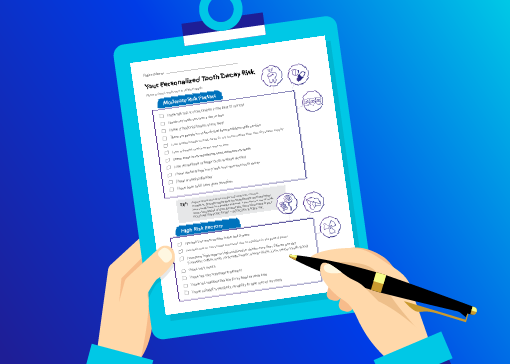Managing caries and motivating change, part 2: Motivational interviewing
How do you motivate your patients? Discover how caries risk assessments and motivational interviewing tactics can help you connect with…


Whether you’re integrating a new product, adopting a new workflow, or dealing with industry changes in your DSO, transitions can be hard on your team. Learn how best practices in change management can help your practice stay on track and discover how 3M can support your organization.
We can’t always control change – but by managing it effectively, we can reduce its disruptive effects. Change is inherent in everyone’s personal and professional lives, and over the past two years it has often felt both urgent and relentless. Words like “pivot” and “resiliency” were used early in the COVID-19 pandemic to describe how dental professionals quickly implemented new safety protocols and adapted to new kinds of uncertainty and risk. Thankfully, we’re beginning to shift our attention back to familiar, less dramatic kinds of change.
However, even everyday changes can pose challenges to your team. 3M recognizes this, and as part of its commitment to partnership, it has invested in research to understand the specific needs of dental practices and create tools that will help you proactively and successfully manage change.
That’s why I’ve teamed up with 3M, to share guidance from practice-based change management research, insights from dental customers, and change management resources available to help you in your work.
Change management is the application of a structured process and set of tools for leading people to adopt behavior changes that achieve a desired outcome.
How effectively we manage change directly impacts our timeline, budget, and overall success. It can also positively or negatively impact employees and patients.
For example, have you ever been required to make a change that you didn’t understand or that took more effort than seemed worthwhile? Have you been responsible for leading change and struggled to get buy-in? If so, you know firsthand how hiccups in change management can negatively impact employee motivation and loyalty. In today’s tight labor market, employees who are frustrated by change can easily walk away.
Similarly, patients whose treatment experience is affected by poorly managed change – either directly or because they perceive confusion or disagreement among staff members – may be less likely to return.
Fortunately, the positive effects of well-handled change can be just as far reaching. Those effects can include:
3M set out to understand the current state of change management by conducting primary research with dental support organizations (DSOs) and clinical partners in the United States, United Kingdom and Spain. As its framework, 3M selected a research-based change management model used by 80% of Fortune 500 companies.
Developed by Prosci, this model divides the change process into five phases:

In interviews with clinical directors and clinicians, 3M uncovered common, recurring obstacles in managing change that can be avoided with planning and with the right communication tools.
Clinical directors in 3M’s study reported that “Desire” – where buy-in happens – was the most challenging phase. To understand why this might be, it’s helpful to visualize how leaders and frontline employees advance through the change process. Leaders, by nature of their responsibilities, work through “why?” and “what’s in it for me?” as part of their decision to advance a given change in the first place. By the time those leaders announce a planned change, they are psychologically at the “Knowledge” phase or beyond, while those they are communicating to are just arriving at “Awareness.” To address this potential gap, DSOs can allocate time and plan communications that address the individual phases of the change process for particular stakeholders.
Unlike the clinical directors in 3M’s study, clinicians cited “Knowledge” as the most challenging phase. Across industries, the transition from “Desire” to “Knowledge” is where the change process is most likely to break down. In the “Desire” and preceding “Awareness” phase, time needs to be allocated so that employees can react and provide feedback on the proposed change and understand how it benefits them. Once those employees arrive at the “Knowledge” phase, they need time for training outside of their regular job duties and support as they begin using the new product, process or technology in their daily workflow. Ideally, the DSO’s education resource or training expert is embedded in the change management process early and is given resources to build the right training tools. The education resource should also be open to feedback and capable of troubleshooting implementation issues as they arise. More than anything, sufficient time must be allocated for frontline employees to confidently advance from “I know what to do” to “I can do it.”
3M’s research also identified the potential for misalignment around communications. For example, a majority of DSO clinical directors in 3M’s study believed that meetings were the best way to share information with staff, while a majority of DSO clinicians named email as the best channel.
For change communications to be effective, they need to reach their audience where they are and with the right message. After so many virtual meetings and calls, many people now crave the human connection of face-to-face meetings. When training can’t be offered in person, the next best solution is to make it available on-demand and accessible when it’s convenient for the person who needs to absorb the information.
Change management research shows that having a clear and dedicated change champion or ambassador is critical. The change champion should be selected based on the kind of message that needs to be delivered. For example, a strategic, business-wide decision should be conveyed by an executive at the equivalent of the C-suite. In contrast, a change that will impact frontline employees on a daily basis should be communicated by a direct manager. In the case of a large organization or a complex set of changes, there must be consistency in training tools and explanations about what changes are happening over what period of time. Change will be more successful when there is a single source of truth shared by all the individuals communicating at different points to different audiences.
Post-pandemic change fatigue is real and widespread. Frontline employees, especially, may feel worn down by their efforts to transmit confidence and a sense of security to patients even when they themselves were struggling with uncertainty. If you see this in your DSO, be sure to prioritize new initiatives.
Effective change management is important in any organization, and 3M’s research shows how it can especially help DSOs – regardless of their size. By planning ahead and checking in with key people at each step of the process, you can help make change less stressful for your whole team. And that makes for smoother sailing for everyone.
Whether you’re looking for specific training tools or you’re interested in exploring other potential resources, 3M is here to help. For resources to help you manage change in your organization, contact your 3M Key Account Manager.

How do you motivate your patients? Discover how caries risk assessments and motivational interviewing tactics can help you connect with…

Caries is a complicated multifactorial disease. In this two-part series, explore how caries risk assessments can help improve evaluation and…

Zirconia may be part of your everyday vocabulary, but how much do you know about this ceramic material? Learn more…